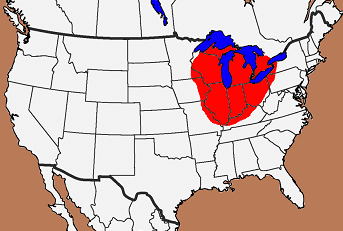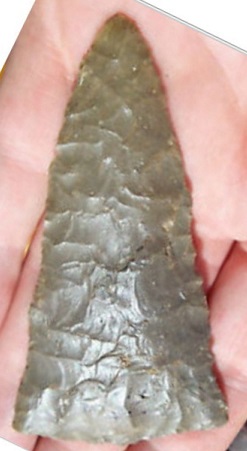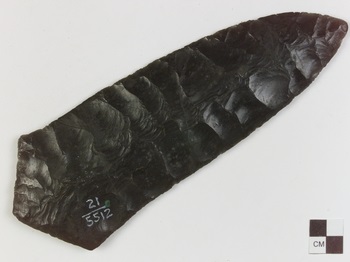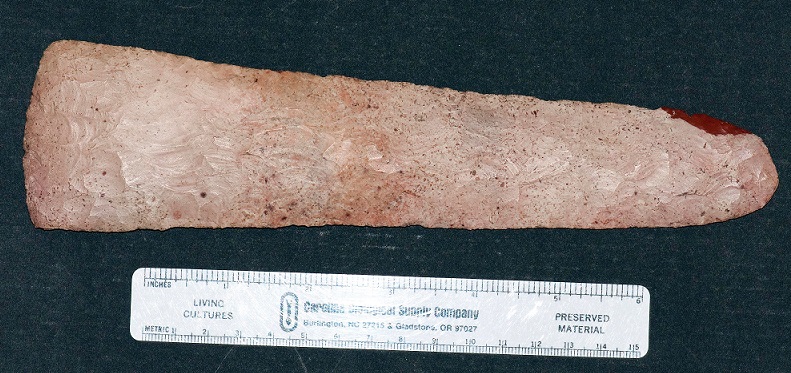Name Details:
Named By: James B. Griffin
Named For: County type
is located
Date Identified: 1965
Type Site:
Hopewell Mounds, Ross County, Ohio
Ross Blade
Cluster:
Commonly Utilized Material:
Date:
Cultural Period:
2,100 - 1,700 B.P.
Middle Woodland
Roman Warm
Hopewell Culture
Glacial Period:
Culture:
Outline is Representative of Size and Shape:
Description of Physical Characteristics and Flaking Pattern:
This is a thin large to very large triangular point with a flattened cross section. The blade
is primarily recurvate with the tip curving out to parallel sides and flaring out towards the base. The base may vary from convex to having a "V" shape. This point has a random
flaking pattern, but may have a collateral flaking pattern with a secondary pressure flaking along the edges. This point has a high quality of workmanship.
Size Measurements: Total Length -
110 to 520 mm, Blade Width - 40 to 80 mm
Distribution:
Distribution Comments:
This point is primarily found in the Illinois, Indiana, and Michigan. These points may be found with decreasing frequency into the other highlighted areas at sites
associated with the Hopewell Culture.

Additional Comments:
The Hopewell Culture marks the beginning of the Middle Woodland Period (W13).
Points are commonly four to ten inches long (Johnson et al. 2008).
These points / blades have been
found in crematory context and tombs from Wisconsin to Ohio. These points are rarely found outside Hopewell burial and ceremonial structures. Blades are usually
constructed from Illinois Kaolin flint, Knife River flint, and Lower Illinois River Valley white chert. Few examples have been found made from Obsidian from the Yellowstone Valley which is thought to have been
traded in (Schroder, 2013 W18).
Point Validity: Valid Type
Griffin is a distinguished anthropologist and professor for the Department of Anthropology at the University of Michigan. He conducted extensive
studies and excavations in the Ohio River valley including excavations at the Norton Mounds. This type was named in a professional publication and has many professional
references. This is considered a valid type.
.
Age Details:
Pictures Provided By:
Dr. Roy Caldwell (Large Blade)
Picture 2 is example from Museum of the American Indian in New York
Muskingum Relics
References: (See Reference Page, Entry Number):
29, 30, 37, 42, W10, W11
Ross Blade





